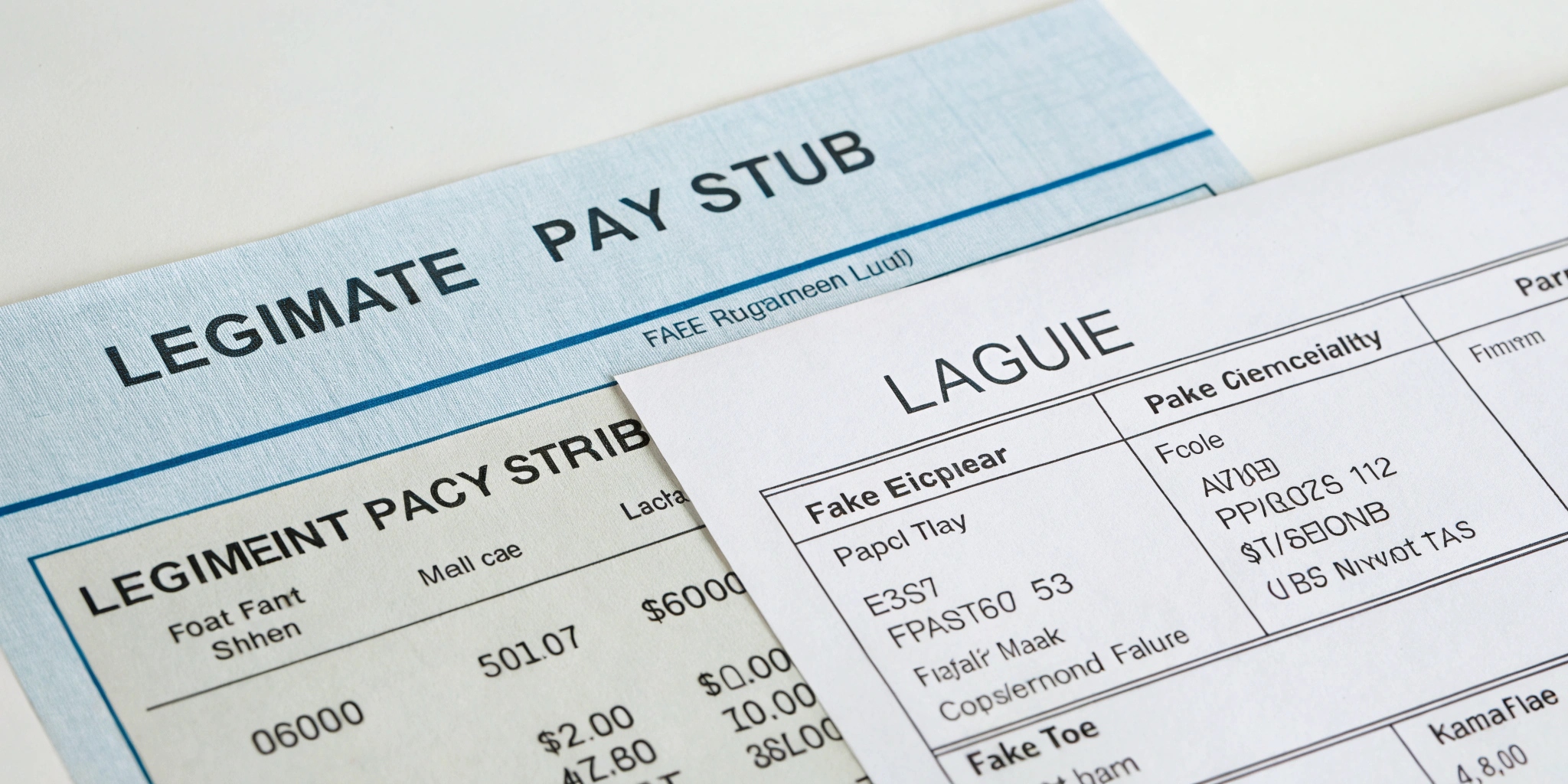
Fake vs. Legitimate Pay Stubs: How to Spot the Difference
Pay stubs are essential documents used to verify income, employment, and financial history. They're often required for rental applications, loan approvals, or even job background checks. But with the rise of online pay stub generators, it's become increasingly easy for people to create fake pay stubs making it crucial to know how to identify a legitimate one from a fraudulent one.
In this guide, we’ll explore the key differences between real and fake pay stubs, common red flags, and what to look out for when verifying authenticity.
Why Do People Create Fake Pay Stubs?
Fake pay stubs are typically used to:
● Qualify for loans or mortgages without sufficient income
● Secure rental properties
● Misrepresent employment status or income
● Defraud financial institutions or government agencies
Creating or using a fake pay stub is considered fraud and can have serious legal consequences.
Top Signs of a Legitimate Pay Stub
Legitimate pay stubs typically include:
1. Accurate Employer Information
Business name, address, and contact info should match public records or company listings.
2. Clear Employee Details
Full name, address, job title, and employee ID (if applicable).
3. Consistent Formatting
Professional layout with proper alignment, spacing, and consistent fonts.
4. Pay Period Details
Clearly stated start and end dates for each pay period.
5. Earnings Breakdown
Gross pay, deductions, taxes, and net pay—all correctly calculated.
6. Year-to-Date (YTD) Information
Most real stubs include YTD totals for earnings and deductions.
7. Tax Deductions
Accurate withholding for federal, state, Social Security, and Medicare (in the U.S.).
Red Flags of a Fake Pay Stub
Watch out for these warning signs:
1. Round Numbers
If the gross pay, net pay, or taxes are all perfectly rounded (e.g., $1,000.00), it’s likely fake. Real stubs usually include cents and odd figures due to deductions and hourly rates.
2. Inconsistent Formatting
Mismatched fonts, poor alignment, spelling errors, or blurry logos are classic indicators of a fake.
3. Missing Deductions
A stub that lacks tax withholdings, benefits deductions, or other standard withholdings is highly suspicious.
4. No Employer Contact Details
Legit pay stubs usually contain the employer’s name, address, and sometimes a phone number or EIN (Employer Identification Number). Absence of this information is a red flag.
5. Unrealistic Income or Hours
If an hourly employee is listed as working 160 hours per week or receiving a suspiciously high salary, something’s not right.
6. No Year-to-Date Figures
Most authentic stubs include year-to-date earnings and deductions. Fake stubs often leave these out.
7. Downloaded from Unverified Websites
If someone submits a stub that was clearly created from a free, unprofessional, or sketchy online generator, it's worth further verification.
How to Verify a Pay Stub
If you suspect a pay stub might be fake, take these steps:
● Contact the Employer Directly: Call the company’s HR department to confirm employment and pay details.
● Cross-Check Bank Statements: Ask for recent bank statements to match with paycheck deposits.
● Request W-2 or Tax Documents: These are harder to fake and often align with the pay stub data.
● Use Background Check Services: Employment verification services can identify discrepancies
Conclusion
In an age where digital tools can easily be misused, distinguishing between fake and legitimate pay stubs is essential for protecting your business or personal interests. Knowing what to look for such as formatting, deductions, and contact info can help you avoid costly mistakes or legal issues. When in doubt, always verify through additional documentation and trusted sources.